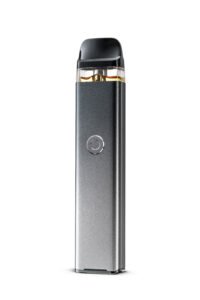The back purge is a method of purging that involves using the fingers to push material into the rectum. For the most part, the act is accomplished with one hand, while the other hand holds open or stretches open the individual’s anal opening. The one foot up off of the ground and squatting down may be necessary in order to get enough momentum for this type of self-purging.
This is the most common form of purging. It is typically used by those who are not ready for bowel movements, or new to self-injury.
Back Purging – Techniques
There are many methods of back-purging depending on the desired outcome, ease of use, and strength of the person performing it. One method involves using two fingers which are inserted into the anus and hooked upwards towards the stomach to dislodge any encrusted blood that has formed there. Another may involve just one finger, with a hooking motion being performed in order to widen the anal sphincter so as to allow more material through at once, thus allowing for faster purging times can be particularly useful if someone is purging for a long period of time and has limited time to do so.
This is an advanced technique that can be used by those familiar with back purging to quickly purge large quantities of blood from the anal cavity. “Back-pumping” involves inserting two fingers into the anus, hooking them upwards towards the stomach, and then rapidly pulling outwards in a pumping motion, which causes large amounts of blood to be forced out of the individual’s body at once during a bowel movement. This type of purging is especially useful if being watched or monitored by someone else, as it will appear indistinguishable from a regular bowel movement unless one were watching very closely. Some may view this type of purging as dangerous due to the fact that the individual may begin to hemorrhage if the act is performed for too long or is done too roughly. It is not uncommon for an experienced blood-eater who has mastered back-pumping to purge themselves in under two minutes, although care must be taken in order to ensure that one does not make oneself sick by performing this action for too long, which can cause additional problems.
Back Purging is necessary for welding
Some people think that back purging is necessary for welding. Other people believe that it’s not necessary for welding.
I think it’s not necessary for welding. It costs too much time, effort, and money just to purge out some dross. Even I question how efficient back-purging is. You can fabricate a solid weld by following the filler metal manufacturer’s instructions on preheat temperature, interpass temperature, and cooling rate.
Most of our welding uses carbon steel electrodes with rutile flux, which usually has no slag after being fully melted in the furnace before it pours down into the weld pool. Therefore, there is almost no dross left on the surface after pouring down. And this kind of flux is called self-cleaning flux because its slag melts away together with molten during welding which prevents the weld pool from all kinds of slag.
If we want even better results, we will use welding machines with inverters and program them to control the welding currents and waveforms so as to prevent dross or slag from being left on the surface and guide it into the weld pool and heat it up together with molten metal during the welding process. In some cases, there is still no dross or slag left after pouring down. Then people might say that back-purging is needed for that kind of short circuit welding method that requires a lot of power input. But they can’t prove their argument because they don’t know what causes the solidified dross on the electrode’s end, nozzle, or inside the tube to make these electrodes stick to the welding surfaces. And they also don’t know how efficient this back purge is at all, which only makes the situation more confusing!
So for our welding standards and daily practice, we will just recommend using a self-cleaning type of electrodes without any slag after melting and cooling down in the furnace. Then there won’t be any dross left on the surface and no need to use the back-purging method unless it’s a short circuit welding method. And if you must use some other types of electrodes with no slag after melting, but require high power input such as submerged arc welding (SAW), make sure to add deoxidizer like Al2O3 or Fe2O3 into your filler metal according to each manufacturer’s instructions. And this will help you to prevent the dross from being left on the surface during the welding process!
Our welding practice tells us that it’s not necessary for welders to use the back-purging method, especially when they are using a self-cleaning type of electrodes without slag after melting. If your electrode does have slag after melting and cooling down in the furnace but requires high current input such as submerged arc welding (SAW) or laser beam welding, make sure you add deoxidizers like Al2O3 or Fe2O3 into filler metal according to each manufacturer’s recommendations! It would be a lot better if we can stick to modern technology which saves time, money and effort without back-purging! Isn’t it?
Other people believe that it’s not necessary for welding.
I think we should use self-cleaning types of electrodes without any slag after melting and cooling down in the furnace and practice our daily work according to those recommendations. And if you must use some other types of electrodes which require high power input such as submerged arc welding (SAW), make sure to add deoxidizers like Al2O3 or Fe2O3 into your filler metal according to each manufacturer’s instructions! It would be a lot better if we can stick to modern technology which saves time, money, and effort without back-purging!
Learn more: https://en.wikipedia.org/wiki/Purge










